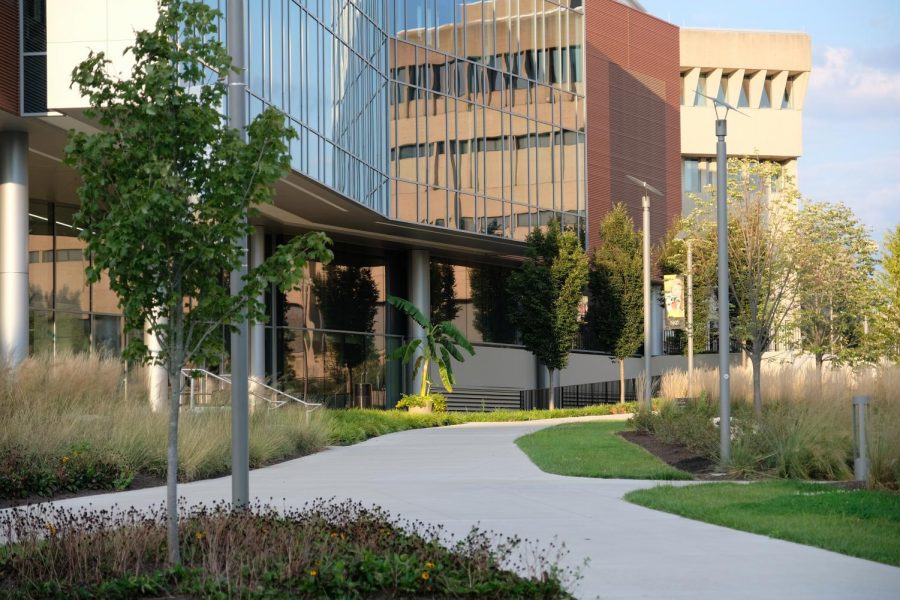Smelly plants outside HIC: Do the benefits outweigh the assault on our nostrils?
Ever notice a strange odor around HIC? There's a reason for it
October 2, 2019
Students have noticed a strange smell on their commute between classes, particularly concentrated near the gardens outside of the Health Innovation Center.
The university paid special attention to this area, with the implementation of “rain gardens” and various other plants that offer a variety of benefits to the campus and environment.
The rain gardens were designed to aid in controlling storm run-off from the HIC. They are comprised of shallow pits that are full of plants that can survive the periods of intense hydration caused by the run-off.
This clever design works to conserve water, as the plants are expected to get all that they need from the run-off.
When maintenance sought advice on what plants they should put in the gardens around campus, an important request was for them to be native.
“When you have native plants, it means your native insects can eat them,” said Dr. Maggie Whitson, associate professor of botany.
This triggers a chain reaction of benefits. When insects have plenty of food, the insect population increases, which means there is more food available for baby birds to eat. Birds will also feed on the plants’ berries, which not only gives them nutrition to live, but allows for the seeds to be spread elsewhere after being digested. More plants grow as a result, and the cycle starts over again as those new plants provide food and shelter to native wildlife.
There was a special request for milkweed. This is the plant that monarch caterpillars eat before metamorphosing into beautiful pollen-sipping butterflies. Whitson said there are at least three different types of milkweed on campus.
Another benefit of the plant selection in the gardens is that they are designed to be colorful throughout the year—keeping the campus aesthetically pleasing during every season.
“There are some impacts everywhere like climate change, or plastic pollution on little islands way out in the middle of the ocean. But here in Kentucky, there’s very little land that has never been cleared by humans, almost all the land here in Kentucky has at least been cleared at some point, even if they’ve let it grow back, “ said Whitson.

Another benefit of the plant selection in the gardens is that they are designed to be colorful throughout the year—keeping the campus aesthetically pleasing during every season.
Even though the university has flattened a huge area of land for parking lots and buildings, the gardens across campus are our way of giving back. These spaces can support native wildlife, as well as offer a pleasant view of pollinators sipping nectar and small birds eating fruit.
As Whitson walked around the Health Innovation Center, she touched and sniffed any plant she suspected as the culprit for the attack on everyone’s noses.
As it turns out, it isn’t one particular plant that is giving off an unpleasant smell, but a combination of them, such as fragrant sumac and Russian sage, as well as fresh fermenting mulch.
Much of the fragrance that students are noticing from plants is intentional. These plants use fragrance to attract pollinators and tell them that they have nectar for sipping. Without it, it would be significantly more difficult for pollinators to land in the correct spot for extraction, or find the flowers to begin with.
Megan Cox, sophomore environmental science major, said the smell isn’t amazing, but having these spaces on campus makes it all worth it.
“It’s really the only green space on campus,” said Cox. “So it’s important that we have it.”
According to the United States Department of Agriculture, 1/3 of all agricultural output depends on pollinators. There is evidence that the pollinator population is on the decline, and the effects of that, if left unchecked, will be felt by everyone—wildlife and human populations alike.
“Our native plants and animals just don’t have any place of their own left; they don’t have anywhere that they can go,” said Whitson. “If we’re going to keep them, if we’re going to let them live, we have to share.”
